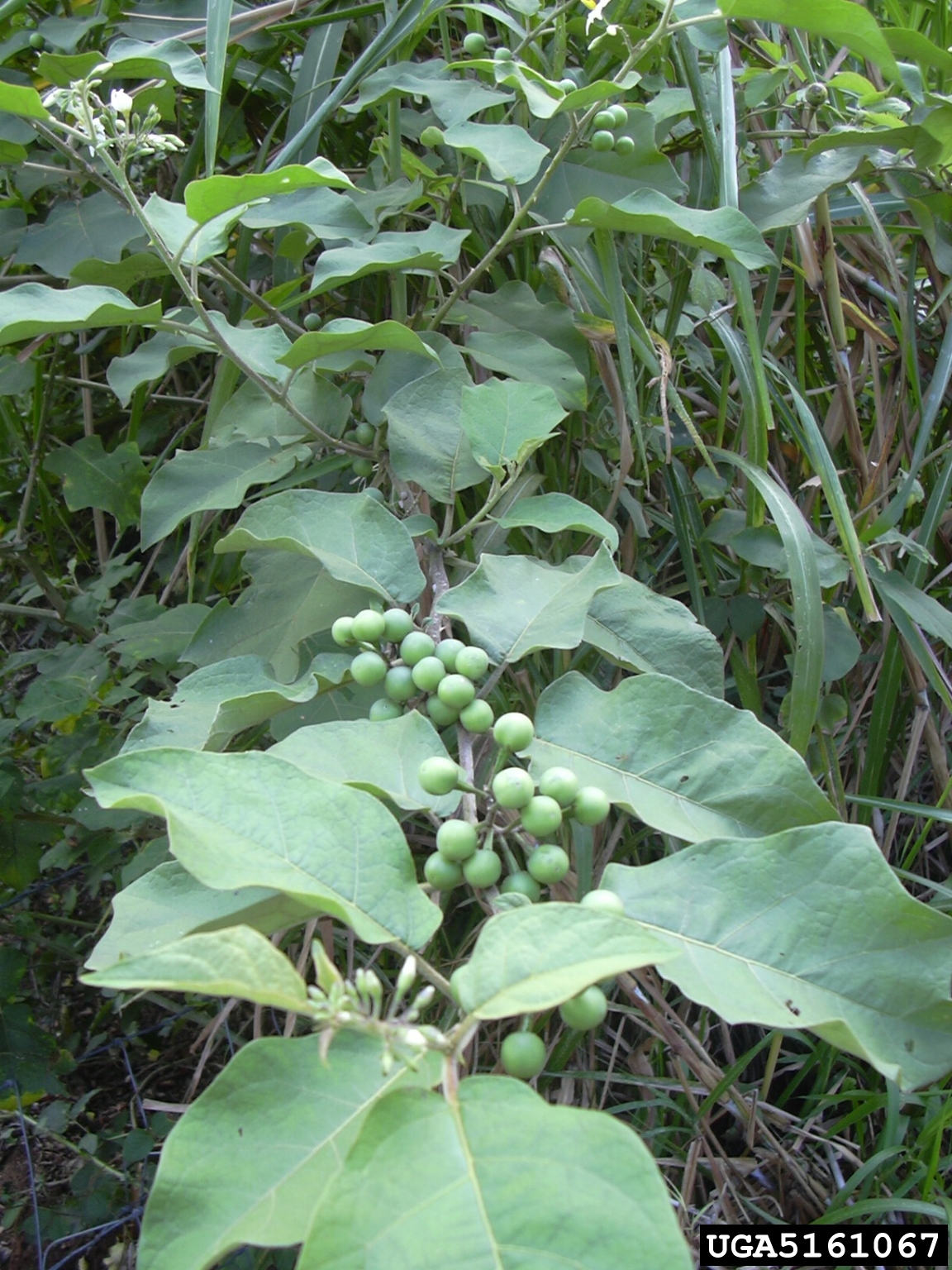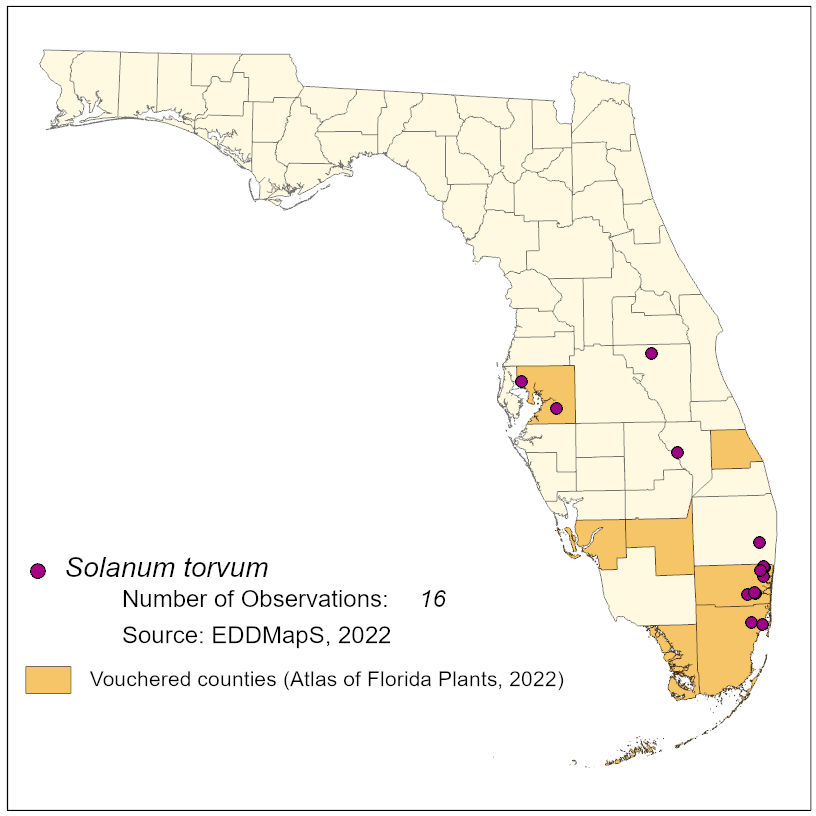Common Name: susumber, turkey berry
Family: Solanaceae
Common Synonyms: none
USDA Hardiness Zone: 8a-11
Growth Habit: Shrub or tree
Origin: Tropical America
FISC Category: 2
FDACS Listed Noxious Weed: Yes
Introduction Date: Before 1900
IFAS Assessment:

Evergreen, widely branched, prickly shrub or small tree, to 5 m tall. Stems armed with stout, flattened prickles, usually straight or slightly curved. Twigs stellate tomentose. Leaves alternate, simple, petioled, blades oval to elliptic, unlobed to strongly lobed, to 25 cm long, bases unequal, tips pointed, surfaces densely stellate hairy below, less dense above, with usually a few long prickles on midveins (especially above). Flowers many, in large branched clusters, with simple, mostly glandular hairs on stalks. Corolla bright white, to 2.5 cm across, lobed about 1/3 of its length, lobes not recurved. Stamens with prominent anthers. Fruit an erect, subglobose berry, to 1.5 cm wide, yellow when ripe.
Disturbed uplands and swamps
Sprouts from roots, forming thickets. Flowers and fruits all year. Seeds probably dispersed by birds and other animals.

NA
Langeland, K.A., H.M. Cherry, C.M. McCormick, K.C. Burks. 2008. Identification and Biology of Non-Native Plants in Florida's Natural Areas-Second Edition. IFAS Publication SP 257. University of Florida, Gainesville, Florida.
PIER. 2011. Pacific Island Ecosystems at Risk (PIER): Solanum torvum. http://www.hear.org/pier/species/solanum_torvum.htm. Accessed on June 26, 2014.